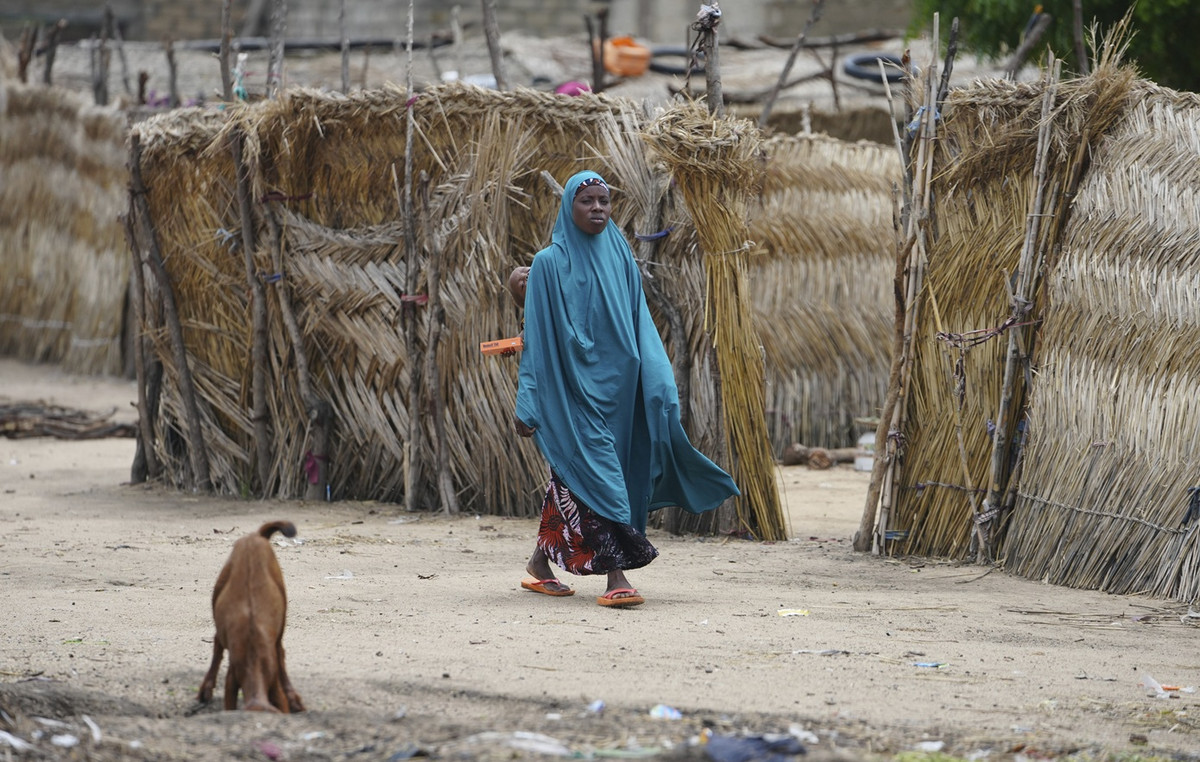When the Hunga Tonga-Hunga Ha’apai volcano erupted in Tonga in January 2022, it caused the largest eruption ever recorded with modern technology.
Estimated to be hundreds of times more powerful than the Hiroshima nuclear explosion, it was even heard in Alaska, over 10,000 km away. A cloud of ash, smoke and volcanic matter rose 58 kilometers high and hurricane-speed events were reported in Earth’s highest atmospheric layer, in the
edge of space.
And then came the waves. Tsunami warnings were issued for nearby island nations in the Pacific – Fiji, Samoa and Vanuatu – as well as farther afield in New Zealand, Japan, Peru, the US and Canada. The ensuing tsunami devastated Tonga with waves up to 15 meters high, killing three people and causing an estimated $90.4 million in damage.
A team of researchers has just completed the most thorough investigation to date into the event. It confirmed that nearly 10 square kilometers of seabed had been displaced – the equivalent of 2.6 million Olympic-sized swimming pools, and a third more than initial estimates.
However, they found that only three-quarters of this material was deposited in an area less than 20 kilometers from the volcano, leaving a sizable chunk still unaccounted for. New Zealand’s National Institute for Water and Atmospheric Research (NIWA), which conducted the study, believes this missing debris can be partially explained by “air loss” – which is why it hasn’t been noticed yet, pending mapping completion. . The material was thrown into the sky and remained in the atmosphere, circulating for months, which explains why it is not at the bottom of the sea.
But it is not clear to researchers the exact reason for such an explosive eruption. Some answers came from an earlier expedition also conducted by NIWA, which mapped the sea floor around Hunga Tonga-Hunga Ha’apai.
marine explorer
Erica Spain is a marine geology technician at NIWA and a member of the expedition that left in April. Describing herself as a “seabed detective”, Spain uses high-tech echolocation machines to hunt underwater volcanoes, and gathers clues about the “triggers” that influence underwater eruptions.
Aboard the RV Tangaroa, NIWA’s research vessel equipped with state-of-the-art underwater surveillance technology, Spain had a dual role: operating the multibeam echo sounder and sampling mud and rocky sediments from the sea floor.
The echo sounder “sends acoustic pulses to map the sea floor in 3D”, says the specialist, comparing it with the echolocation used by dolphins. “We have hydrophones that receive this echo, and from that we can determine the depth of the sea floor and build an idea of its shape and geometry.”
With a volcanic cone only 100 meters high on a small island in the Pacific, the Hunga Tonga-Hunga Ha’apai volcano was not widely observed before the eruption. Beneath the surface, however, it stretched more than 20 kilometers wide and almost two kilometers deep.
Ongoing instability in the caldera meant that the crew could not examine the vent of the volcano – and so an unmanned surface vessel was sent. Remotely operated by UK-based SeaKit, 10,000 miles off Tonga, the 12-meter-long robot discovered that the caldera had collapsed, and now lies 700 meters below the surface.
In total, 22,000 square kilometers of seabed were scanned. Parts of the seafloor around Hunga Tonga- Hunga Ha’apai had already been mapped. By comparing maps of the sea floor before and after the eruption, “we can start to build a better picture of what these triggers might be,” explains Spain.
explosive discoveries
According to the technician, the results of the expedition surprised the team. They expected the massive eruption to have left a lot of volcanic debris on the sea floor, but in fact, “the volcano looked very similar to how it looked decades earlier.”
Instead of resting on the ocean floor, “a lot of this volcanic material ended up rising directly into the stratosphere,” he says.
The discrepancy between the size of the caldera collapse and the seafloor debris pointed to another factor in the explosion: Hot magma from the volcano interacted with cold seawater to create steam. “Steam consumes a thousand times more volume than water. To some extent, this explains why the eruption was so explosive.”
Results from data collected before, during and after the eruption pointed to “multiple mechanisms” happening simultaneously, according to Emily Lane, NIWA hydrodynamic scientist and member of the New Zealand Tsunami Expert Panel.
The initial eruption blasted water in its path, causing localized ripples. But changes in air pressure reinforced these waves creating a meteotsunami that travels faster than the speed of sound. In the case of Hunga Tonga-Hunga Ha’apai, it generated a pressure wave that traveled around the world three or four times,” details Lane.
The waves were also created by volcanic debris that rained down into the ocean and the caldera collapse.
The NIWA already has a tsunami warning system in place, with seafloor sensors around New Zealand and the South Pacific to monitor sea levels, tides and currents, and to report anomalies. Now, according to Lane, the data collected from Tonga could help refine these sensors.
“The event really changed our understanding of volcanic tsunamis because this is the first time we’ve been able to get modern instrument measurements of what happened,” says Lane.
The seafloor map not only gave researchers a better understanding of the eruption at Hunga Tonga-Hunga Ha’apai, it also contributed to a larger project: Seabed 2030, a global initiative led by the Nippon Foundation that aims to map the entire seabed.
The map can help identify important or vulnerable ecosystems, says Spain. The information collected can also contribute to the recovery of the ocean and the surrounding marine environment. For a place like Tonga, where around 82% of the population is engaged in subsistence fishing, understanding the impacts of eruptions on aquatic life is vital.
“We don’t know enough about the ocean and our impacts on it. Mapping it, observing it and understanding it is therefore incredibly important”, opines Spain.
Source: CNN Brasil
Bruce Belcher is a seasoned author with over 5 years of experience in world news. He writes for online news websites and provides in-depth analysis on the world stock market. Bruce is known for his insightful perspectives and commitment to keeping the public informed.







